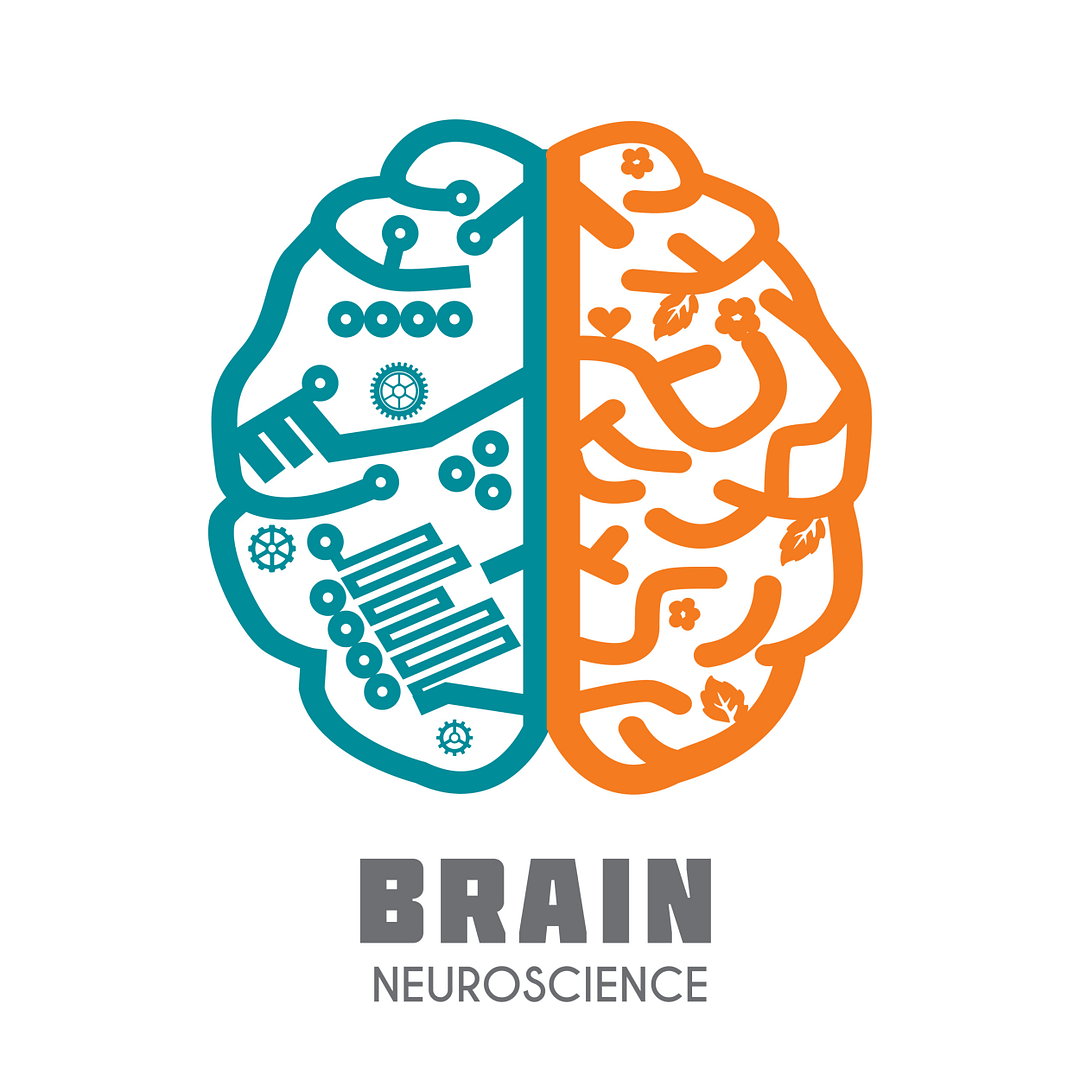Sahaja & You Profiles
The Athlete
You have no doubt found that pursuing athletic fitness shapes your mind, your body, and your life in many positive ways. You enjoy looking fit, feeling healthier, faster, stronger, and more energetic. And you’re willing to work at it. If you think of yourself as an athlete, chances are, you’re quite disciplined when it comes to regular practice. There is, perhaps, a yearning in your spirit to experience peak ability. The rewards of achieving incremental goals may motivate you to aim even higher.
You may already possess many of the traits typically shared by superior athletes, such as:
- motivational drive
- self-confidence
- focus and concentration
- goal-setting, ability to envision success
- commitment
- determination
- endurance
- pain tolerance
- dexterity, spatial and motor skills, visual discrimination, hand-eye coordination, perception
- emotional regulation, emotional maturity, emotional intelligence and maturity, frustration tolerance, grace under pressure
- time management, ability to follow a schedule
- quality sleep, proper nutrition
- team player (for team sports)
- adaptability, learning from mistakes
- coachable or mentorable
If you find it hard to stay motivated sometimes, or are ever tempted to just throw in the towel, if you sometimes doubt yourself, judge yourself or compare yourself unfavorably to others, meditation can help.
How Sahaja meditation Resonates with Athletes
Sahaja meditation is a vehicle through which the mind-body’s natural abilities can be continuously enhanced, helping prepare you to meet the mental and physical demands of your chosen sport or fitness practice. You’ll find that your meditative practice will grow and evolve over time and with it, your athletic skills will improve.
The mechanisms through which Sahaja meditation influences your inner energy system combine to create holistic fitness, improving overall energy, vitality and stamina. Sahaja’s state of thoughtless awareness ,combined with the ongoing nourishment of inner energy provided by a regular meditative practice, recharges your mind and body. You’ll immediately notice that relieving energy blockages and restoring balance to your energy centers through Sahaja techniques infuses you with more natural energy and vitality in your day-to-day life.
Following are some specific mental, physical and spiritual benefits of Sahaja meditation that resonate with athletes.
Improved dexterity
Dexterous or skilled actions depend on the speed of gross movements of hand and arms, manual rhythm, and co-ordination of eye and finger control. One study using a standard tweezer dexterity test (using a tweezer to place metal pins in evenly spaced holes in a metal plate within four minutes) found that 4 − 8 weeks of Sahaja training improved dexterity by 20.4 percent on average (Manjunath & Telles, 1999).
Improved alertness, attention span and focus
Meditation can dramatically increase focus, alertness and attention span, even for the monotonous tasks that are sometimes inherent to athletic workouts. Sahaja meditation has been shown to increase activation of — and have “up-regulating” effects on — fronto-parietal attention networks (Aftanas and Golocheikine, 2001, 2002a, b, 2003). In fact, meditation has been found to be more effective than napping, caffeine or exercise, even for people with no prior meditation experience (O’Hara, Kaul, 2006). Meditation also helps prevent attentional blink deficits, a phenomenon that occurs when two pieces of information are presented to us in close succession and our brains can’t detect the second piece of information because they’re still busy processing the first (Slagter et al, 2007). Processing efficiency and the ability to multitask, is, of course, integral to developing athletic prowess in many sports. The long-term meditator’s brain is better connected, better balanced, better synchronized, better organized and more efficient.
Improved cognitive functioning (memory, attention, perception, reasoning, learning efficiency), increased neuroplasticity
Meditation takes advantage of the brain’s natural plasticity to induce structural changes to the brain, thus lasting changes in cognitive and emotional processing. A recent review of neuroimaging research on athletes’ brains found neurophysiological evidence of the mechanisms underlying the plastic, adaptive changes in athletes’ brain circuitry. Extensive daily physical training builds compound motor skills — such as tasks that require quick stimulus discrimination, decision making, and specific attention. These tasks repeatedly reinforce key neural networks, which continues to drive more plasticity, which allows us to continually improve (Nakata, Yoshie et al, 2010). Meditation functions like “push-ups” for the brain, improving memory, reasoning, creativity, learning, motivation. Studies at UCLA found that the brains of active meditators were larger and contained more gray matter than the brains of non-meditators. They also found that the normal age-related decline of white-matter tissue (which facilitates stronger, faster electrical connections between brain regions) was considerably reduced in meditators; in fact, the white-matter fibers were more numerous, more dense and better insulated throughout the brains of meditators, improving critical aspects of cognitive functioning: intelligence, reasoning ability, learning, reaction time and efficiency, memory, creativity, emotional stability and self-actualization (the ability to achieve one’s potential). Meditation has been found to actually alter the fundamental electrical balance between the brain’s cerebral hemispheres (Cahn and Polich, 2006), increasing synchrony between emotional processing and reason, which leads to better, more efficient decision-making.
Improved Perception
Studies show that meditation can lead to improvements in perceptual sensitivity and perceptual clarity. Several studies have found that Sahaja improved critical flicker–fusion frequency — the ability to able to detect light flashes of very short duration (Manjunath & Telles, 1999; Raghuraj & Telles, 2002; Telles, Nagarathna, & Nagendra, 1995). Similar results were found in mindfulness meditators after 3 months of intensive meditation (D. P. Brown et al., 1984a, 1984b). Sahaja training was also found to increase visual contrast sensitivity in a group of epileptic adults (Panjwani et al., 2000). Meditation has a positive effect on our ability to handle perceptual rivalry. Perceptual rivalry, such as binocular rivalry, occurs when dissimilar stimuli (such as two different images) are viewed simultaneously; that is, an image is presented to one eye and a different image is presented to the other eye. Perception in the brain alternates between grasping these different images. Rather than perceiving a stable, single blend of the two stimuli, we experience alternations in perceptual awareness — consciousness and attention — over time as the two stimuli compete for perceptual dominance. In a well-known study of experienced Tibetan Buddhist monks, meditation was found to influence these fluctuations, helping to stabilize one of the images in awareness, thus facilitating better visual switching (Carter et al., 2005). As perception improves, functioning of body parts becomes smoother and better integrated. Meditation can also improve depth perception and balance.
Influences dopamine: Motivation, attention, learning, mood
Meditation has been found to increase dopamine levels (Kjaer et al., 2002) and increase meditators’ ability to focus attention on the present moment. Dopamine is the primary neurotransmitter involved in our motivational drives (reward-motivation neural circuitry) as well as in the control of movement/motor activity, including the fine motor skills and finesse required for accomplished athletic performances. Dopamine is also heavily involved in regulating attentional systems, heightening sensory awareness, and the release of natural feel-good endorphins, which act as natural mood lifters and have a calming effect on us. Dopamine is widely known to enhance learning, memory and the flow of information in frontal brain regions linked to thought and emotion. It is associated with feelings of joy, pleasure and reward; in fact, one study found that meditation increased dopamine by as much as 65 percent in limbic (emotional) brain regions (Lou et al., 1999).
Improved discipline and commitment
Better discipline increases commitment to regular practice, which improves skills and, of course, tones muscle and overall fitness. The sharpening of attention achieved through Sahaja meditation creates an increased awareness of the need to set goals, stick to a schedule, continue to improve and complete tasks. It illuminates your priorities and goals; they become crystal clear. You become more determined, more inner-directed, rather than allowing yourself to be governed by external influences. Clear attention makes it so much easier to focus on the right things, stay organized and stay “on point.” At a spiritual level, the balancing of the Kundalini energy in left energy channels helps overcome lethargy, a key deterrent to discipline. In fact, collective wisdom of the Sahaja practice shows that a blocked left energy channel results in poor discipline and lethargy along with weak attentional skills. You’ll find that you have more discipline, sharper focus and increased motivation — qualities that are essential to keeping you on the path of improvement.
Enhanced self-awareness and introspectiveness
Because Sahaja improves self-awareness and introspectiveness, you’ll have live and constant feedback of what’s going on with your mind and body. This powerful self-diagnostic tool allows you to quickly pinpoint the root causes of problems, learn from your mistakes, and adapt your behaviors to achieve your goals.
Emotional self-regulation
Meditation helps you master your emotions, which means you’ll be better equipped to focus and solve problems, rather than just feel guilty about your mistakes or poor performances and reflect on what “might have been.” You’ll begin to live in the present, rather than dwelling on the past (common in depression), or worrying about the future (common in anxiety). Experienced meditators develop a new “Idle Mode” (e.g., during downtime or daydreaming) that’s more present-centered and less self-centered, which leads to better mental health. Meditation functions as an emotional regulator, producing lasting changes through, primarily, two mechanisms: attentional control (by controlling what we pay attention to) and cognitive control (by exercising conscious control over our thoughts and feelings). Meditation teaches us to view thoughts simply as events in the mind, independent of their content and emotional charge. We are able to detach emotion from thought and pay nonjudgmental, nonreactive attention to all aspects of our experience, which reduces emotional reactivity and helps develop a mature emotional perspective of “how we play the game.”
Better stress and anxiety management, coping skills and total mind-body resilience
Stress can be exhausting and debilitating and it interferes with performance. Poor anxiety and stress management, for example, has been shown to contract forearm and biceps muscles during performances, negatively influencing fine motor skills in a competitive environment and increasing the risk of playing-related musculoskeletal disorders (Yoshie et al, 2009). Sahaja meditation acts as a stress buffer, helping you manage stress, take control of your life, and sustain robust health and self-reliance. Regular meditation activates a built-in stress management mechanism that helps your cope with stressors on an ongoing basis, enhancing long-term resilience. The sense of inner calm you experience during Sahaja’s state of thoughtless awareness instantly boosts your energy level and emotional resilience, enabling you to better cope with stressful events in the future. Freeing your mind from stressful thoughts through meditation frees more of your energy to enjoy all the good things that life has to offer every day.
Decreased chronic pain and pain sensitivity
Meditation can actually modify how the brain perceives pain. Meditation increases melatonin, which has been found to play a role in reducing pain sensitivity. Several studies have pinpointed other mechanisms through which meditation may relieve pain. NIH-funded neuroimaging studies found that long-term meditation can mitigate the brain’s response to pain by 40 to 50 percent. Studies at Wake Forest Baptist Medical Center found that meditation’s ability to help people let go of negative or distracting thoughts and emotions produced a 40 percent reduction in pain intensity and a 57 percent reduction in pain unpleasantness. Meditation, in fact, produced an even greater pain reduction than pain-relieving drugs such as morphine. Another study found that meditation helped relieve chronic back pain by increasing awareness of the present and by inhibiting negative emotional processing that worsened the pain. It also regulated attentional skills such as focus and concentration, which allowed participants to become fully engaged in present moment activities so that they could actually choose how to — direct their attention. Meditation in a peaceful, natural setting (e.g., garden or water setting) was found to be especially effective at reducing chronic pain, as well as helping to improve fine motor skills and overall feelings of well-being (Morone et al, 2008).
Improves self-awareness and emotional intelligence (EI)
Meditation has been widely demonstrated to increase self-awareness and emotional intelligence. EI is the ability to identify, understand and manage emotions, and use them constructively to facilitate thought and drive behavior. Improved self-awareness improves self-confidence, which is your belief in your abilities within a particular realm of expertise (e.g., a particular sport). EI shapes our understanding of ourselves and our interactions with others. It defines how and what we learn from our experiences and helps us set priorities. It determines whether you’re a good team player, if you engage in team sports. It helps you channel your feelings and impulses purposefully, and pursue goals with energy and persistence. You develop the capacity to focus your emotions on a desired goal and delay gratification if it serves the greater long-term goal. Your own internal process of self-realization increases your compassion for, and sensitivity to, others and improves your communication skills, which improves your relationships.
A healthy competitive spirit
The Sahaja lifestyle may even include traits such as aggressiveness and competitiveness, though in a fair, balanced, and mature manner that does not harm others or unfairly deny a competitor a “win.” Through meditation, one may become more aggressively determined, or aggressive in a positive sense, such as “charged up” to set goals and pursue them aggressively. One may even become more competitive but in a mature manner that acknowledges that “the best man always wins” and that superior performances are to be respected. Meditation, in other words, can make you both a better winner and a better loser.
Improved sleep quality
Relief of stress, anxiety and depression through meditation automatically improves sleep quality. Meditation also elevates levels of the sleep hormone melatonin, which not only regulates sleep but interacts with serotonin to stabilize mood, increase positive emotions and prevent distress.
References
Aftanas LI, Golocheikine SA (2001) Human anterior and frontal midline theta and lower alpha reflect emotionally positive state and internalized attention: high-resolution EEG investigation of meditation. Neuroscience Letters 310: 57-60.
Aftanas, L.I., Varlamov, A.A., Pavlov, S.V., et al., Affective Picture Processing: Event-Related Synchronization within Individually Defined Human Theta Band Is Modulated by Valence Dimension, Neurosci. Lett., 2002, vol. 303, p. 115.
Aftanas L., Golosheykin, S. (2005) Impact of regular meditation practice on EEG activity at rest and during evoked negative emotions. International Journal of Neuroscience 115: 893-909.
Brown, D. P., Forte, M., & Dysart, M. (1984a). Differences in visual sensitivity among mindfulness meditators and non-meditators. Perceptual and Motor Skills, 58, 727–733.
Brown, D. P., Forte, M., & Dysart, M. (1984b). Visual sensitivity and mindfulness meditation. Perceptual and Motor Skills, 58, 775–784.
Cahn, B.R., Polich, J., 2006. Meditation states and traits: EEG, ERP, and neuroimaging studies. Psychological Bulletin 132 (2), 180–211.
Carter, O., Presti, D., Callistemon, C., Ungerer, Y., Liu, G., & Pettigrew, J. (2005). Meditation alters perceptual rivalry in Tibetan Buddhist monks. Current Biology, 15, R412–R413.
Goleman, D. J. (1996). The meditative mind: Varieties of meditative experience. New York: Penguin Putnam.
Kjaer, T.W., Bertelsen, C., Piccini, P., Brooks, D., Alving, J., & Lou, H. C. (2002). Increased dopamine tone during meditation-induced change of consciousness. Brain Research. Cognitive Brain Research, 13 (2), 255-259.
Lazar SW, Bush G, Gollub RL, Fricchione GL, Khalsa G, et al. (2000) Functional brain mapping of the relaxation response and meditation. Neuroreport 11: 1581-1585.
Lou, H.C., Kjaer, T.W., Friberg, L., Wildschiodtz, G., Holm, S., Nowak, M., 1999. A O15-H2O PET study of meditation and the resting state of normal consciousness. Human Brain Mapping 7 (2), 98–105.
Manjunath, N. K., & Telles, S. (1999). Improvement in visual perceptual sensitivity in children following yoga training. Journal of Indian Psy- chology, 17, 41–45.
Natalia E. Morone, MD, MSc, Cheryl S. Lynch, MD, MPH, Carol M. Greco, PhD, Hilary A. Tindle, MD, MPH, and Debra K. Weiner, MD. “I felt like a new person.” The effects of mindfulness meditation on older adults with chronic pain: qualitative narrative analysis of diary entries. Journal of Pain. 2008 September; 9(9): 841–848.
Bruce O’Hara, Prashant Kaul of the University of Kentucky, US. The results were presented at a recent conference of the Society for Neuroscience in 2006.
Nakata, H., Yoshie, M., Miura, A., & Kudo, K. (2010). Characteristics of the athlete’s brain: Evidence from neurophysiology and neuroimaging. Brain Research Reviews, 62, 197-211.
Panjwani, U., Selvamurthy, W., Singh, S. H., Gupta, H. L., Mukho- padhyay, S., & Thakur, L. (2000). Effect of Sahaja yoga meditation on auditory evoked potentials (AEP) and visual contrast sensitivity (VCS) in epileptics. Applied Psychophysiology and Biofeedback, 25, 1–12.
Posner MI, Rothbart MK (2007) Research on Attention Networks as a Model for the Integration of Psychological Science. Annual Review of Psychology 58: 1-23.
Raghuraj, P., & Telles, S. (2002). Improvement in spatial and temporal measures of visual perception following yoga training. Journal of Indian Psychology, 20, 23–31.
Slagter HA, Lutz A, Greischar LL, Francis AD, Nieuwenhuis S, Davis JM, Davidson RJ.. Mental training affects distribution of limited brain resources. PLoS Biol 2007;5(6):e138.
Telles, S., Nagarathna, R., & Nagendra, H. R. (1995). Improvement in visual perception following yoga training. Journal of Indian Psychology, 13, 30–32.
Telles, S., Nagarathna, R., Nagendra, H. R., & Desiraju, T. (1994). Alter- ations in auditory middle latency evoked potentials during meditation on a meaningful symbol—“Om.” International Journal of Neuroscience, 76, 87–93.
Yoshie M, Kudo K, Murakoshi T, Ohsutki T. Music performance anxiety unskilled pianist: Effects of social-evaluative performance situation on subjective, autonomic, and electromyographic reactions. Exp Brain Res. 2009;199:117–26.










